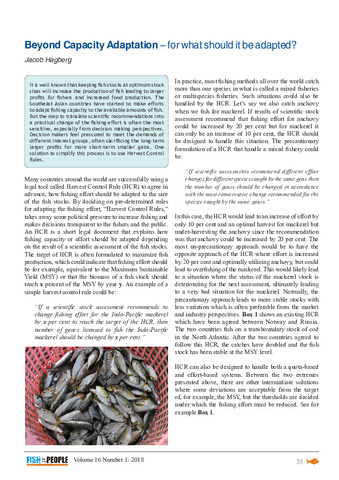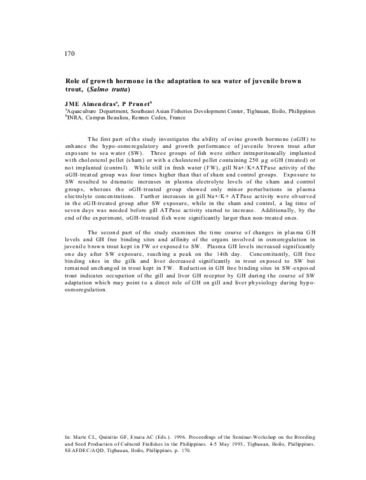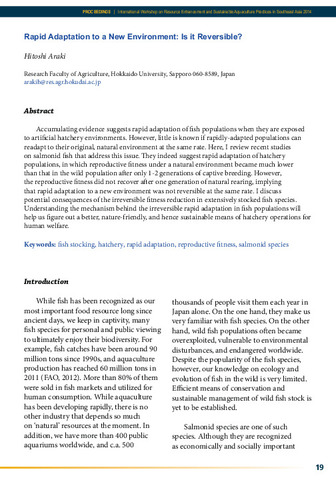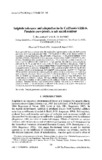Perlihatkan publikasi sederhana
Beyond capacity adaptation – for what should it be adapted?
Share
| dc.contributor.author | Hagberg, Jacob | |
| dc.date.accessioned | 2018-06-18T06:58:27Z | |
| dc.date.available | 2018-06-18T06:58:27Z | |
| dc.date.issued | 2018 | |
| dc.identifier.citation | Hagberg, J. (2018). Beyond capacity adaptation – for what should it be adapted? Fish for the People, 16(1), 37-38. | en |
| dc.identifier.issn | 1685-6546 | |
| dc.identifier.uri | http://hdl.handle.net/20.500.12066/1358 | |
| dc.description.abstract | It is well known that keeping fish stocks at optimum stock sizes will increase the production of fish leading to larger profits for fishers and increased food production. The Southeast Asian countries have started to make efforts to adapt fishing capacity to the available amounts of fish. But the step to translate scientific recommendations into a practical change of the fishing effort is often the most sensitive, especially from decision making perspectives. Decision makers feel pressured to meet the demands of different interest groups, often sacrificing the long-term larger profits for more short-term smaller gains. One solution to simplify this process is to use Harvest Control Rules. | en |
| dc.language.iso | en | en |
| dc.publisher | Secretariat, Southeast Asian Fisheries Development Center | en |
| dc.subject | South East Asia | en |
| dc.title | Beyond capacity adaptation – for what should it be adapted? | en |
| dc.type | magazineArticle | en |
| dc.citation.volume | 16 | |
| dc.citation.issue | 1 | |
| dc.citation.spage | 37 | |
| dc.citation.epage | 38 | |
| dc.citation.journalTitle | Fish for the People | en |
| dc.subject.asfa | Adaptations | en |
| dc.subject.asfa | fishing effort | en |
| dc.subject.asfa | fish | en |
| dc.subject.asfa | stocks | en |
| dc.subject.asfa | fishing capacity | en |
| dc.subject.asfa | fishing | en |
| dc.subject.asfa | Profits | en |
| dc.subject.asfa | fishers | en |




